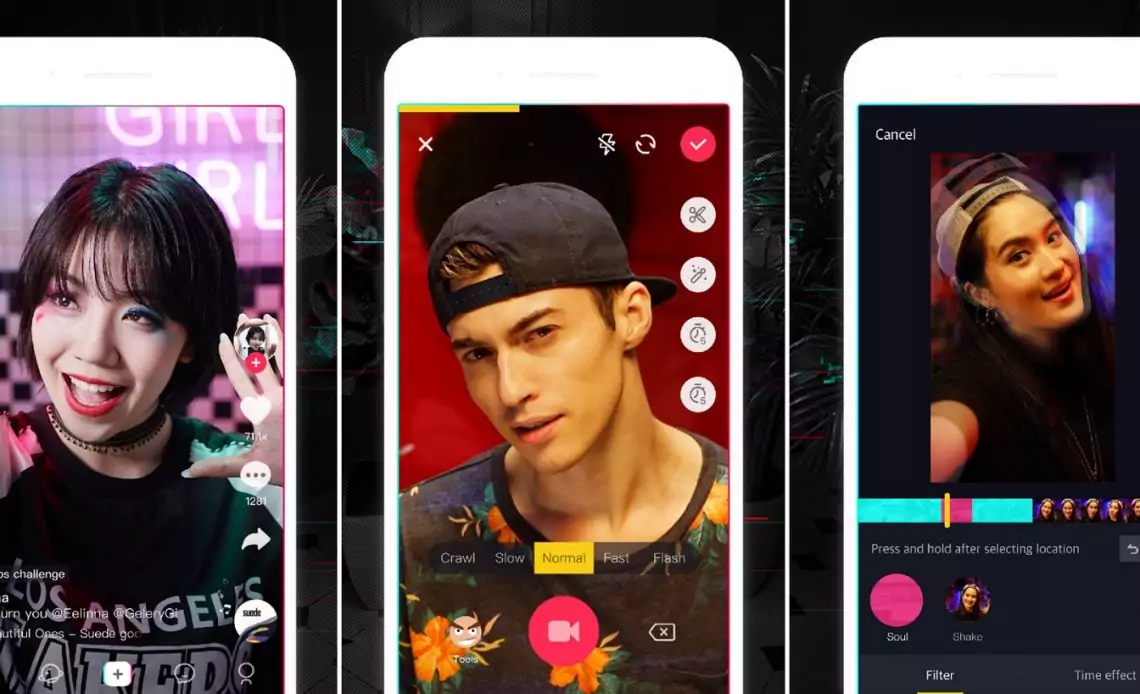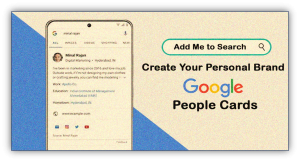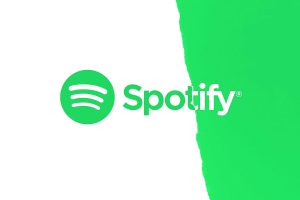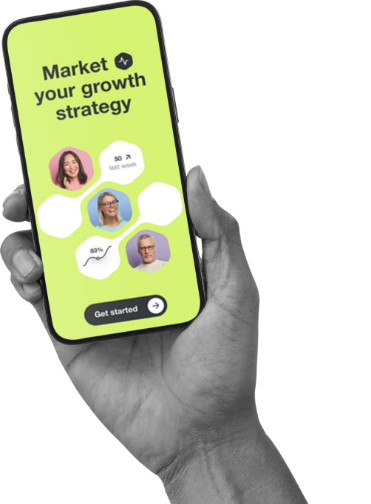With 834.3 million monthly users worldwide, TikTok’s ad revenues are set to hit $13.2 billion in 2023, a 33% increase from the previous year.
The global sensation that is TikTok originated from the concept of the Chinese entertainment app, Douyin. This idea was brilliantly cultivated by the Chinese tech powerhouse, ByteDance, and brought to the international stage in 2016. Envisioned by founder Alex Zuhu, TikTok is an embodiment of the fusion of video recording, editing, and social networking capabilities in a single, unified platform.
Before diving into how to create an app like TikTok, let’s explore what makes this app so in demand.
Why TikTok Is So Amazing
TikTok allows its users to create bite-sized videos, infuse them with music, and share them across their social network in an instant. Users can either lip-sync or use the music as a background score for their videos, providing a creative outlet that resonates powerfully with the younger demographic, especially millennials and Gen Z.
A quick glance at TikTok’s popularity & global domination:
- TikTok is estimated to have 834.3 million monthly users worldwide in 2023.
- TikTok has been downloaded over 3.5 billion times to date. It was downloaded 246.9 million times globally in the first quarter of 2023 alone.
- According to the latest data, TikTok’s ad revenues are set to hit $13.2 billion in 2023, a 33% increase from the previous year.
- TikTok’s audience is predominantly young, with 25% of its users aged between 19 and 25.
- Addison Rae, a popular TikTok content creator, rakes in an estimated $5 million annually, making her the highest earner on the platform.
- The platform outperforms its social media counterparts like Instagram and Facebook in terms of engagement.
Special Features Of TikTok
Taking a closer look at the features offered by TikTok, it’s apparent why it stands apart in the crowded social media landscape. Many features, such as login/sign up, profile editing, messaging, push notifications, and the ability to react to different content, mirror those of platforms like Instagram and Snapchat. However, several unique features give TikTok its competitive edge:
- Short Video Recording and Uploading: Users can create and share bite-sized videos effortlessly.
- Advanced Video Editing: The app offers a suite of editing tools, including trimming, fast-forwarding, and adding filters. The inclusion of Augmented Reality (AR) filters allows users to add unique effects to their videos.
- Social Connections: TikTok allows users to share their content on other social media platforms, thereby expanding their reach.
- Live Streaming: Once users amass a following of 1,000 people, they can interact with their audience in real-time through live streams.
- Geolocation: This feature allows users to share location-based content and discover other TikTokers in their vicinity.
- Personalized Content: Through Machine Learning algorithms, the app delivers a personalized content feed to each user based on their preferences.
- Duet: A feature that allows users to collaborate on videos.
- Reactions: This lets users record their reactions to specific content with the original sound playing in the background.
- Hashtags: TikTokers use hashtags to make their content go viral and participate in various challenges.
In essence, TikTok has successfully positioned itself as a formidable player in the realm of social media by continually innovating and tailoring its offerings to meet user demands. Understanding how to create an app like TikTok isn’t just about duplicating its success—it’s about harnessing the principles that made it so popular. The platform’s impressive growth highlights the increasing consumer appetite for engaging, bite-sized content and community-driven interaction.
This article is a comprehensive, step-by-step guide for anyone interested in creating an app like TikTok. It covers everything from initial research and planning to design, development, monetization strategies, testing, and maintenance.
So, let’s begin!
Step 1. Research and Planning
-
Market Research
Identifying the target audience
Your app’s target audience should align with your business goals. With TikTok, the majority of users are under 30, reflecting the platform’s appeal to a younger, tech-savvy demographi3. Surveying, focus groups, and online analytics tools can provide crucial insights into your audience’s preferences and behaviors.
Analyzing user behavior and preferences
Understanding what your target audience wants is vital. By observing user interaction patterns on similar apps and conducting surveys or interviews, you can glean invaluable information about user preferences.
-
Competitor analysis
Identifying competitor apps
Apart from TikTok, apps like Instagram (Reels), YouTube (Shorts), and Snapchat offer similar features. Studying these apps can help identify market trends, challenges, and opportunities.
Analyzing their features and functionalities
Evaluate the features, user interface, monetization strategies, and user reviews of these apps. This analysis will help you define what makes your app unique and competitive.
-
Concept development
Brainstorming app features
Listing potential features and arranging them by priority—essential, desirable, and nice-to-have—can clarify the app’s core functionality.
Identifying Unique Selling Points (USPs)
USPs distinguish your app from competitors. TikTok’s key USPs are its algorithmic feed that caters to user preferences, creative tools for video creation, and its focus on community and trends.
Step 2. Design and Development
-
User Interface Design
Determining the UI design style
The UI should be attractive, intuitive, and aligned with the preferences of your target audience. TikTok’s design, for example, is minimalistic and colorful, appealing to its young audience.
Creating a user-friendly interface
User-friendliness is paramount. Clear navigation, responsiveness, and logical layout contribute to a positive user experience.
-
Technical Implementation
Choosing a suitable technology stack
The technology stack will significantly influence your app’s performance. TikTok uses technologies like React Native for cross-platform app development, Python and Java for backend development, and AWS for cloud storage.
Building the app
This stage involves translating your plans into code, creating the app structure, and implementing core features.
-
Back-end Development
Developing a stable and scalable back-end
A stable and scalable backend ensures that your app can handle a growing number of users. This involves setting up servers, and databases, and crafting an efficient data architecture.
Integrating third-party APIs
Integration with APIs such as social media login features, payment gateways, and map services, will enhance the app’s functionality and user experience.
Step 3. App Features
-
Video creation and editing features
Video recording
Your app should allow users to record videos within the platform, similar to TikTok’s easy-to-use video recording feature.
Consider offering a range of editing tools such as cut, crop, merge, speed control, and more to let users refine their content.
-
Audio features
Audio recording
Users may want to add original audio to their videos, so incorporating an audio recording feature is a good idea.
Audio editing
Options for editing, overlaying, and adjusting audio can greatly enhance a user’s content creation options.
-
Filters and Special Effects
Stickers and emojis
These features allow users to add personality to their videos.
AR filters
AR filters, like face filters or background effects, can elevate the user’s content and overall app experience.
-
Social Sharing
Social media integration
Allowing users to share their videos on various social media platforms can help boost your app’s exposure.
In-app sharing
An in-app sharing feature, similar to TikTok’s “For You” page, encourages user interaction and content circulation.
Step 4. Monetization Strategies
-
In-App Advertising
Native ads
Native ads blend with the app’s form and function, improving user experience and engagement rates.
Interstitial ads
These full-screen ads appear at natural pause points, ensuring visibility without disrupting user experience.
-
Subscription-Based Model
Premium Features Access
A premium subscription could offer users ad-free viewing, exclusive content, or advanced editing tools.
Ad-free experience
Offering an ad-free experience as part of a subscription model can attract users looking for uninterrupted use.
Step 5. Testing and Launch
-
Testing the MVP (Minimum Viable Product)
Beta testing stage
Beta testing with a small group of users helps identify bugs and areas for improvement.
Performance optimization
Based on feedback from beta testing, optimize the app’s performance before the final launch.
-
App Launch and Promotion
App Store Optimization (ASO)
Optimizing your app’s title, keywords, and description can improve its visibility on app stores.
Organic and Paid Promotion
Promote your app using organic methods such as SEO, content marketing, social media, and consider consulting with a SaaS SEO consultant to maximize your app’s visibility and reach in the digital landscape. Additionally, track your ranking for relevant keywords to gain insights into your app’s performance and make adjustments as needed.
Step 6. Maintenance and Updates
-
User Feedback and Support
Monitoring feedback
Regularly monitor user feedback to understand their needs and expectations.
Responding to user reviews
Responding to reviews, both positive and negative, shows users that you value their input.
-
Regular updates
Bug fixes
Regular updates should address any bugs or issues users have reported.
Feature additions
Adding new features based on user feedback and market trends keeps your app fresh and competitive.
Conclusion
From research and planning, through design and development, to launch and maintenance, we’ve covered the key steps in creating an app like TikTok.
Although challenging, creating an app like TikTok can be a rewarding endeavor. It demands thorough research, meticulous planning, technical prowess, and an unwavering focus on user experience.
Ready to create an app like TikTok? Remember, every journey begins with a single step. Dive into the process with the help of professional app developers at Hoff & Mazor, and bring your unique app idea to life.







